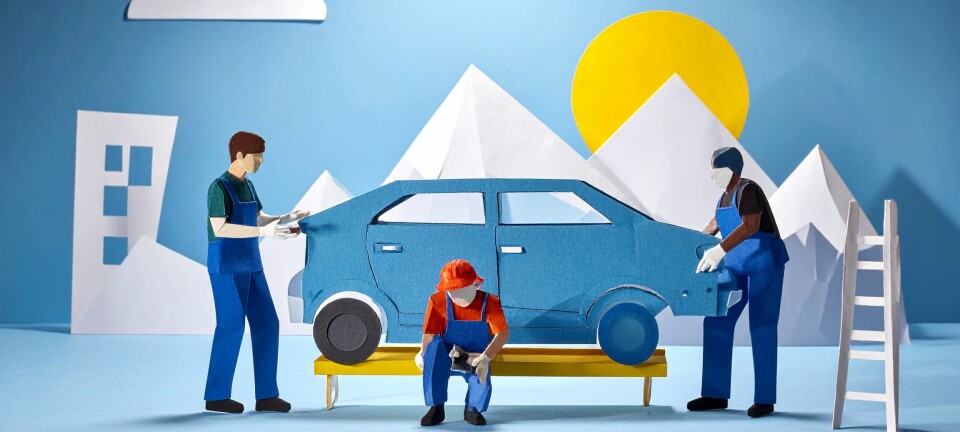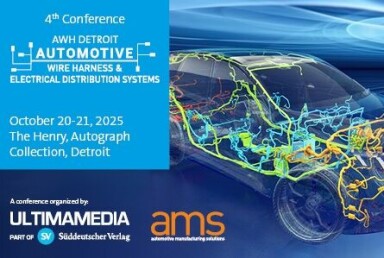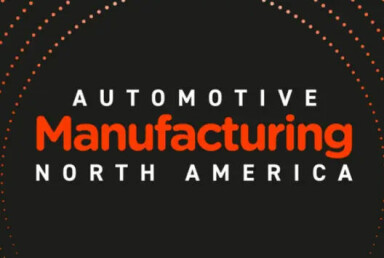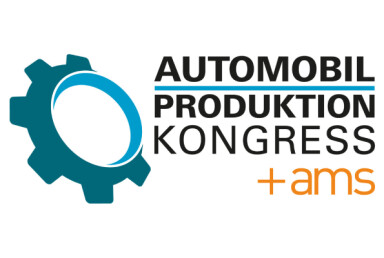Shop Floor Tools
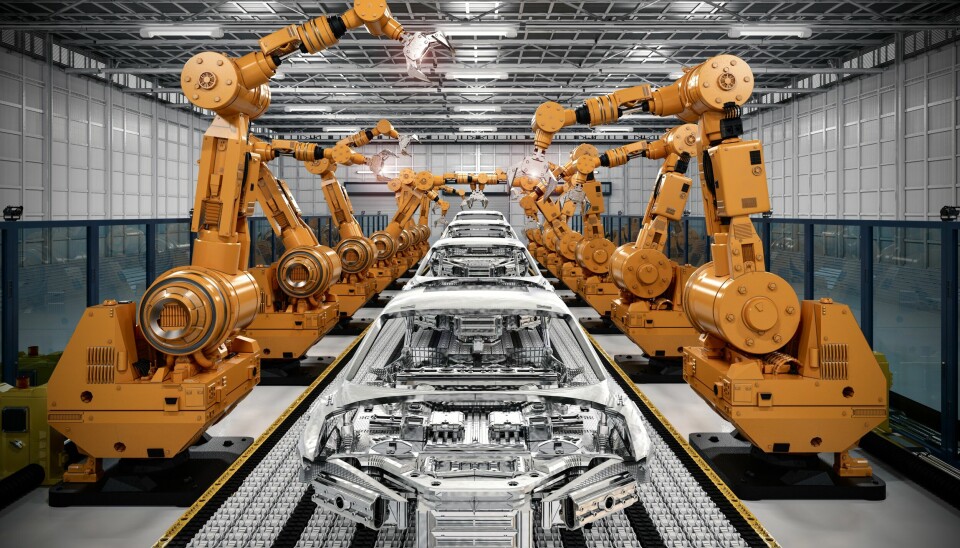
Digital shopfloors: PdM powers manufacturing uptime
Automotive manufacturers are integrating predictive maintenance systems to boost shopfloor productivity and reduce downtime. Waites' Bill Kilbey explains how digital tools transform equipment reliability across OEM and supplier operations.
The automotive sector's digital transformation extends far beyond the vehicles themselves. On factory floors worldwide, manufacturers are deploying sophisticated digital tools that fundamentally alter how production lines operate. Among these shopfloor technologies, predictive maintenance (PdM) stands out for its ability to transform traditional reactive approaches into proactive, data-driven strategies that directly enhance productivity, safety, and accuracy.
This shift represents more than operational improvement; it reflects a comprehensive rethinking of manufacturing reliability. Where traditional maintenance schedules relied on fixed intervals or equipment failures, modern predictive systems integrate sensors, analytics, and artificial intelligence to anticipate problems before they occur. For an industry where unplanned downtime can cost millions per hour, this capability transforms competitive dynamics.

The automotive manufacturing imperative
The scale of modern automotive manufacturing amplifies the importance of reliable shopfloor tools. As Bill Kilbey, Chief Reliability Engineer at Waites, a leader in AI-driven predictive maintenance solutions observes:
"Thanks to advanced technologies and global investments, the US manufacturing industry is entering a new phase, and the automotive industry is keeping pace with the latest innovations. According to the American Automotive Policy Council's (AAPC) 2025 State of the US Automotive Industry report, car manufacturers in the US produce more than 10 million vehicles each year. Further, one car assembly plant can cost $3 billion to build, employ 3,000 workers, produce 200,000 vehicles a year, and contribute $6 billion towards America's annual GDP, according to the same AAPC report."
These figures illuminate why equipment reliability has become central to manufacturing strategy. When facilities represent such enormous capital investment and economic impact, even marginal improvements in uptime translate into substantial returns.
Traditional reactive maintenance simply cannot sustain modern production demands. "With this data in mind, one thing is clear: to maintain overall production, car manufacturers must prioritise reliable PdM solutions to stay on track and maximise uptime at all times," Kilbey emphasises.
Contemporary automotive production incorporates intricate webs of robotics, conveyor systems, stamping presses, and quality control equipment. Each component represents a potential failure point, and the interconnected nature means breakdowns can cascade throughout entire operations. This complexity demands more sophisticated approaches than traditional maintenance schedules provide.
Smart PdM solutions will catch failures before they stop the production line, saving car manufacturers from losing time and money in an industry where efficiency is key to meeting demand
Beyond equipment monitoring: strategic digital integration
Modern PdM systems exemplify the broader trend of integrating intelligent digital tools into shopfloor operations. These platforms combine multiple data sources—vibration sensors, thermal imaging, acoustic monitoring, and operational metrics—to create comprehensive equipment health profiles that directly support productivity and accuracy goals.
Machine learning algorithms analyse historical patterns, current conditions, and environmental factors to predict not just when failures might occur, but what types of failures are likely and which interventions will prove most effective. This intelligence transforms maintenance from a reactive cost centre into a proactive productivity enabler.
"PdM solutions do more than monitor for machine failures. While that is a large part of its use, having a strong PdM plan in place supports production surges, attracts the next generation of reliability analysts, and champions sustainability efforts," notes Kilbey.
This multifaceted value proposition reflects PdMtenance's evolution from operational tool to strategic enabler. During production surges—periods when market demand requires pushing equipment beyond normal parameters—predictive systems model different scenarios, identify vulnerable equipment, and recommend preemptive actions to ensure reliability. The data provides insights for capacity planning, equipment procurement, and process optimisation initiatives.
Operational excellence through digital intelligence
The competitive advantage of PdM becomes clear when considering production realities. As automotive manufacturers navigate increasing demand and supply chain volatility, the ability to anticipate and prevent equipment failures directly translates into operational agility whilst maintaining quality standards.
"The automotive industry is, and will continue to, significantly invest in the US manufacturing space. As production increases, advanced PdM systems — universal sensors, for example — will have a substantial impact on reducing unplanned downtime and machine failures," explains Kilbey.
Universal sensor networks generate vast data streams—vibration signatures, temperature profiles, acoustic patterns, and electrical characteristics. Advanced analytics platforms process this information in real-time, comparing current conditions against established baselines. When anomalies are detected, systems automatically trigger alerts, recommend maintenance actions, or initiate automated responses such as adjusting operating parameters to reduce stress on compromised equipment.
"Smart PdM solutions will catch failures before they stop the production line, saving car manufacturers from losing time and money in an industry where efficiency is key to meeting demand," Kilbey emphasises.
This capability directly addresses core shopfloor objectives: improving productivity through reduced downtime, enhancing safety by preventing catastrophic failures, and increasing accuracy by maintaining optimal equipment performance throughout production cycles.
Workforce transformation and skills development
The integration of PdM as a shopfloor tool creates profound implications for manufacturing workforces. Rather than displacing human workers, well-designed systems enhance the value and job satisfaction of maintenance professionals whilst attracting new talent to the industry.
"The need for advanced PdM technologies goes hand in hand with attracting new employees and upskilling current teams, especially as it relates to AI and automation investments in the manufacturing industry. Automation and smart monitoring tools such as robotics and AI sensors combined with PdM create opportunities for automotive plant workers to uplevel and create more efficient lines of work," observes Kilbey.
This transformation reflects fundamental changes in maintenance work nature. Traditional roles involved reactive troubleshooting under time pressure with limited diagnostic information. PdM elevates professionals into proactive problem-solvers working with sophisticated data analytics tools to optimise performance and prevent failures.
The required skillsets align with younger workers' interests and capabilities. These professionals appreciate digital tools, data-driven decision making, and roles offering intellectual challenge alongside technical work. PdM provides exactly this combination, creating career paths blending traditional mechanical expertise with advanced technology skills.
Given an automotive plant's fast nature, these technologies help ensure optimal machine health, creating fewer opportunities for equipment failure, and, in turn, fewer replacements and less money spent
"Working in tandem with these tools rather than rejecting them not only brings the automotive industry toward a more reliable manufacturing model, but also allows plant managers to integrate a 'human-in-the-loop' maintenance plan where AI supports teams rather than replaces them," notes Kilbey.
This collaborative approach represents best practice in industrial AI implementation. Rather than attempting full automation, successful programmes use artificial intelligence to augment human expertise. AI processes vast data amounts and identifies patterns impossible for humans to detect manually, whilst experienced professionals interpret insights, make final intervention decisions, and execute actual maintenance work.
Environmental impact and sustainability
PdM systems contribute significantly to sustainability objectives through optimised resource utilisation and extended equipment lifespans. By maintaining optimal performance and preventing premature equipment replacement, these shopfloor tools advance circular economy principles whilst reducing manufacturing environmental impact.
"Finally, PdM solutions in partnership with AI analytics and alerts can create data-driven maintenance schedules that extend equipment lifespans, eliminate production bottlenecks, and optimise output and sustainability," explains Kilbey.
Equipment longevity directly impacts environmental performance. Manufacturing equipment embodies substantial energy and materials investment. Extending useful life through optimised maintenance practices amortises environmental costs over longer periods whilst reducing demand for new equipment production.
PdM enables precise resource utilisation—using exactly the right amounts of lubricants, replacement parts, and maintenance labour needed for optimal performance. Traditional preventive schedules often replace components based on time intervals rather than actual condition, leading to waste when functional parts are discarded.
"Given an automotive plant's fast nature, these technologies help ensure optimal machine health, creating fewer opportunities for equipment failure, and, in turn, fewer replacements and less money spent. Naturally, keeping equipment running smoothly will support sustainability goals," Kilbey elaborates.
Integration challenges and success factors
Despite significant benefits, implementing PdM as part of comprehensive shopfloor digitalisation presents challenges. Initial investments in sensors, analytics platforms, and training can be substantial. Organisations must develop new competencies in data management, analytics, and system integration whilst managing cultural changes required to shift from reactive to proactive approaches.
Data quality and management represent particular challenges. Predictive systems require consistent, high-quality data from multiple sources over extended periods. Ensuring data integrity, managing storage and processing requirements, and integrating information from different systems demands careful planning and substantial resources.
The skill requirements span multiple disciplines. Effective implementation requires professionals understanding mechanical systems, electrical systems, data analytics, software systems, and business processes. Developing these multidisciplinary teams proves challenging in competitive talent markets.
Future trajectory and intelligent shopfloors
PdM represents one component of broader autonomous manufacturing trends. As artificial intelligence capabilities advance and sensor technologies become more sophisticated, largely self-managing production systems become increasingly realistic.
Future systems may incorporate automated part ordering, self-scheduling of maintenance activities, and autonomous execution of routine tasks. Integration with other digital technologies will create new optimisation possibilities—blockchain for tamper-proof maintenance records, augmented reality for overlaying insights onto physical equipment, and 5G networks for real-time remote monitoring across distributed facilities.
Leaning into PdM and AI analytic solutions will have greater impacts across car plants than sticking to the status quo
"Leaning into PdM and AI analytic solutions will have greater impacts across car plants than sticking to the status quo. With a global spotlight on the automotive industry, plant leaders who prioritise tech advancements that eliminate downtime, improve workplace quality and education, and increase efficiency are helping build a better world where nothing breaks," concludes Kilbey.
This vision captures PdM's role within the broader ecosystem of shopfloor tools transforming automotive manufacturing. As OEMs and Tier Suppliers continue integrating digital technologies into their operations, PdM provides the reliability foundation enabling other advanced manufacturing capabilities to flourish.
For automotive manufacturers, the question is not whether to implement PdM, but how quickly and comprehensively they can integrate it within their broader shopfloor digitalisation strategies. Early adopters are building competitive advantages that will prove difficult for laggards to match, whilst contributing to industry-wide transformation toward more productive, safer, and more accurate manufacturing operations.


